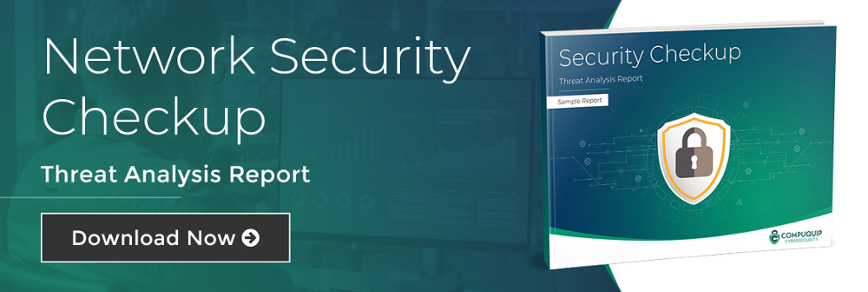5 Warning Signs You Should Update Your Network Security
Network security should be a constant concern for businesses of all sizes. When a company’s cybersecurity architecture is weak or their network security software is out of date, that company is open to cyber threats. They could lose access to the data they need to keep operating, inadvertently allow thieves to steal sensitive data from customers, or face fines and penalties.
But, how do you know if you should update your network security? What are the warning signs that you really need to update your network security architecture?
1) You Don’t Remember When Your Last Network Security Assessment Was
The first sign that you should really update your network security is that you don’t remember the last time you checked your security architecture. Routine network security assessments are a critical part of ensuring that your business (and its customers) are protected against the predations of random online attackers.
If you can’t remember the last time you ran such a network security checkup, then odds are that you have some security gaps that need to be closed ASAP.
2) Abnormal Information Access Requests
One common goal behind attacks on your network is to steal your company’s most sensitive information. As such, sudden spikes in requests to access sensitive data could indicate that you already have an attacker inside your network.
These requests should be particularly disconcerting if they’re administrator-level requests coming from non-admin user accounts. As noted in one Network World article, “Increasingly, attackers are using native tools on computers and servers, rather than known attack tools and malware, to avoid detection by anti-virus and EDR software. But, this is itself an anomaly that you can detect.”
If you’re getting a lot of these unusual requests, it could be a sign that numerous attackers are making it into your network, and that you need to update your network security—either your network security software/tools, or the protocols you use to protect individual user accounts.
3) Your Software Hasn’t Been Patched in Ages
One early warning sign that a company desperately needs to update its network security is whether or not any of that company’s software has had a security patch applied in the last month. This is frequently one of the first few things that Compuquip checks when running a security architecture review.
Proactively identifying out-of-date software and patching it is one of the most basic ways for a company to prevent network security issues. In fact, as noted by one CSO article, “Statistics show that the vast majority organizations that suffer exploits are those that don't patch in the first year or ever patch at all.”
4) You Have More Employee User Accounts Than You Do Employees
User account management is a core part of maintaining network security. This frequently involves performing cleanup on ex-employee user accounts. A company with a well-maintained security architecture will quickly remove an employee’s user account and access privileges either right before or right after their termination of employment—regardless of whether the circumstances were friendly or not.
If your company has more employee user accounts than it does employees, you have one of two problems:
- Old Employee Accounts Aren’t Being Deleted. Leaving old employee user accounts intact is problematic because it gives ex-employees a potential backdoor right into your network. If they decide to abuse that access—or their account gets hijacked because they repeated a password from their social media account or something—that could be potentially disastrous.
- Fake Employee Accounts Are Being Created. This is a potentially worse situation—and the more likely of the two if you practice good cybersecurity hygiene. Here, someone, either an employee with access or an attacker who has successfully cracked your network security, creates fake user accounts to try to disguise their illicit network activity.
In the first case, it’s important to update your network security practices and policies to close this particular vulnerability. In the second case, it’s crucial to discover the means used to create the accounts and close the security gap.
Keeping your network security up to date (and making sure that cybersecurity policies are consistently enforced) is crucial for eliminating potential openings that allow attackers to create fake user accounts and rob your network blind.
5) You’ve Been Breached Before
The last major warning sign that you should update your network security is also the one that you should most work to avoid—the dreaded network security breach. Once your security has been breached, it’s definitely time to gather some network security information, study the nature and cause of the breach, and update security measures to contain future cyber threats that might seek to exploit the same vulnerabilities.
Of course, to even identify a cybersecurity breach, it’s necessary to have some kind of network security intelligence tool—such as security information and event management (SIEM) software.
Such tools can help IT security specialists by collecting forensic data about the methodology of the attack, where it came from, what was targeted, and how successful the attack was. All of this is vital information to have if you’re going to prepare for the next attack.
Need help preparing for the cyber threats looming in your company’s future? Contact the cybersecurity experts at Compuquip to start a network security checkup today. Or, click on the network security checkup button below:

